A visit to Kandersteg and hiking the Kungsleden in Sweden…
The idea of attempting a ‘thru hike’ of a long-distance trail had been in the back of my mind for some time – something a bit longer than what I had attempted before, but still achievable; somewhere remote and scenic (and photogenic), in an environment different to what I’m used to, and something I could attempt on my own. My research led me to decide on attempting the Kungsleden (‘The King’s Trail’) in the Swedish Lappland, a 460.3km length of wild, glacier-carved country near the top of the Earth. In 2020, I was fortunate to be granted the Tony Balthasar Achievement Award, generously funded by Dick Smith AC, to make this a reality.
With COVID throwing several spanners into my plans (I was originally meant to volunteer on the International Service Team for the World Scout Moot in Ireland – an event that was postponed then cancelled), I delayed until 2022 and strung together an itinerary that included a visit to the amazing Kandersteg International Scout Centre nestled in the Swiss Alps, before heading to Sweden and working my way through quite a few logistical hurdles to get to, hike, and return from the Kungsleden.
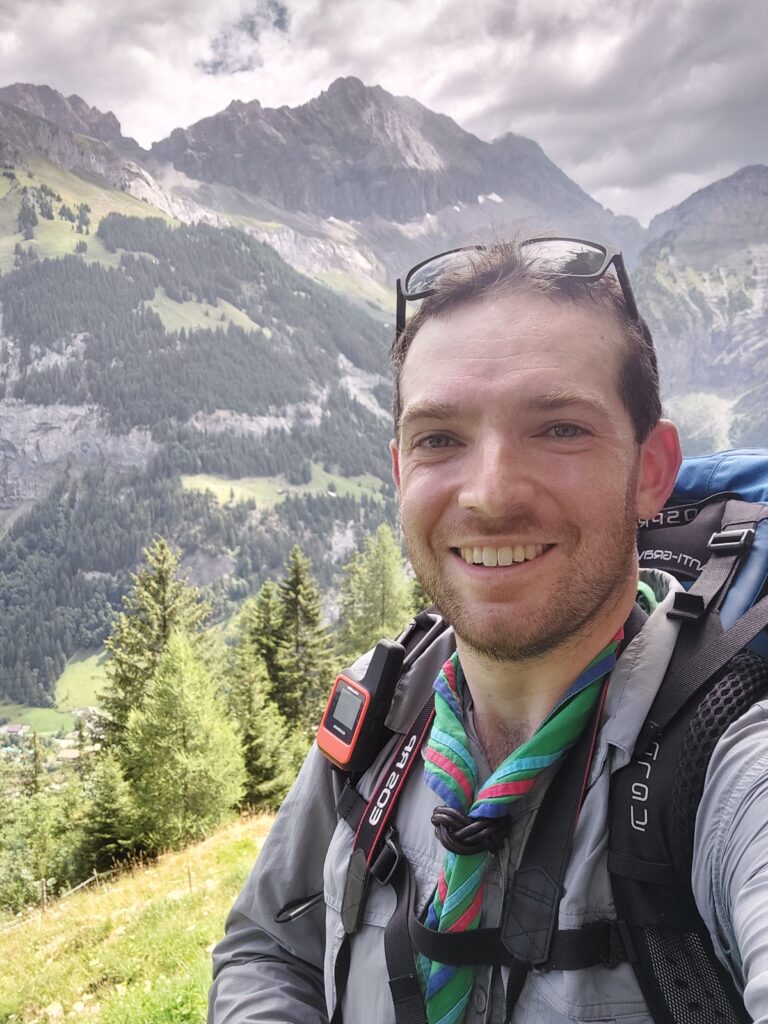
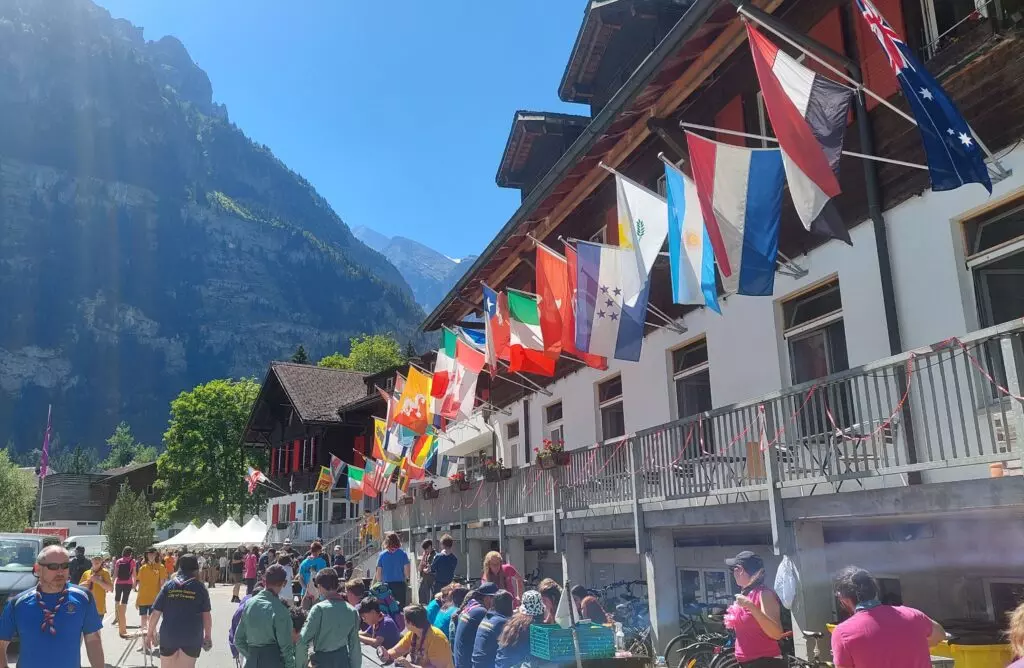
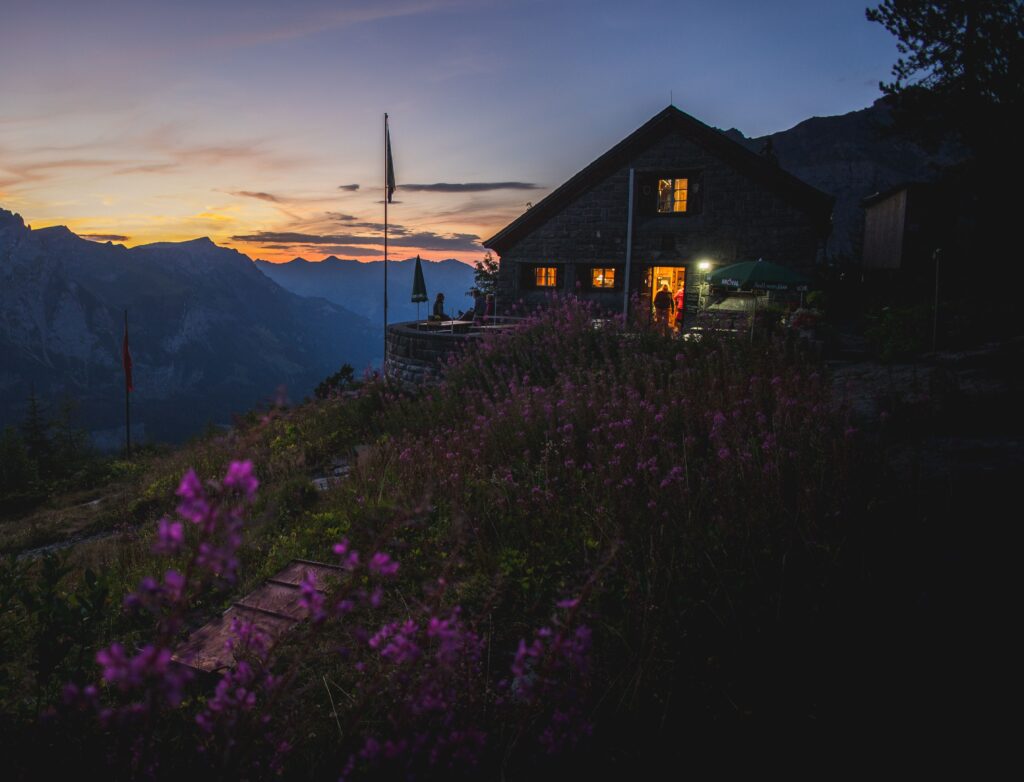
The Scout Centre (KISC) really is an incredible realisation of Baden-Powell’s vision for a mini-Jamboree site in continuous operation. The location is surreal in how picture-perfect it is, with sharp, snowcapped mountains and pine forests all around, and a network of cable cars promising adventures just out of sight beyond the next ridgeline. I spent almost a week there with around 2,000 other Scouts from dozens of countries, learning about how they embrace Scouting in their own ways. A focus of my time was also physical.ly preparing for the Kungsleden, so I packed in several arduous hikes in the surrounding ranges, including an overnight hike to Doldenhorn Hut, a stone cabin on a cliff edge overlooking the alpine lake of Oeschinensee and the Kandertal Valley. This was all while heatwaves were sweeping through continental Europe – and I was very aware of that as I sweated my way up sharp inclines, with the strange combination of hot air shimmering against the backdrop of glaciers and snow.
Feeling a bit fitter, I moved on to Sweden and made some final preparations for my trek in Stockholm, before boarding an overnight train bound for the northern terminus of the Kungsleden, a small town called Abisko, right at the top of the country near where Sweden, Norway and Finland converge, and a fair way above the Arctic Circle line. The train ride itself was a highlight, departing from Stockholm Central in the evening and waking up to expansive views across the plains and lakes of Lappland.
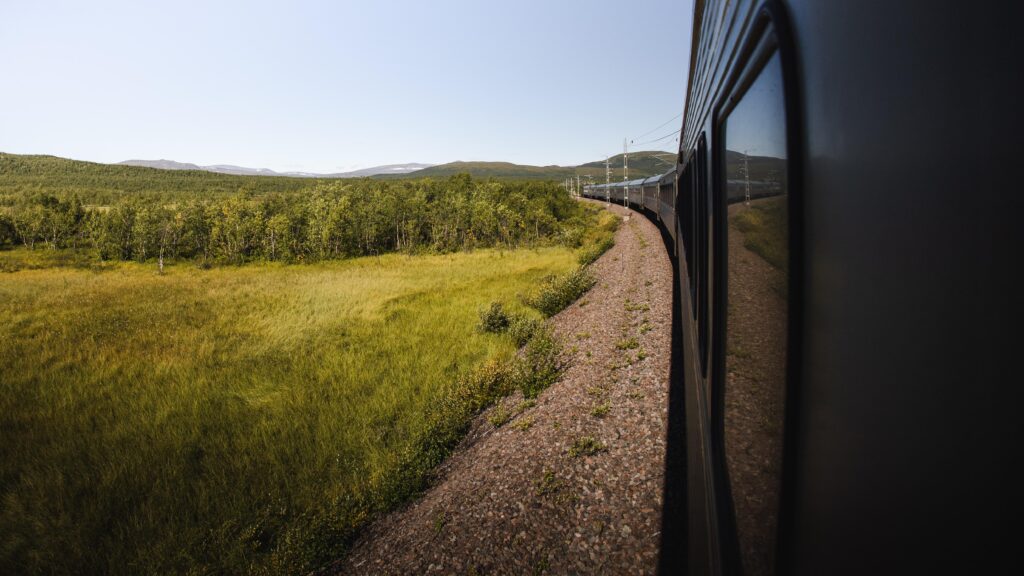
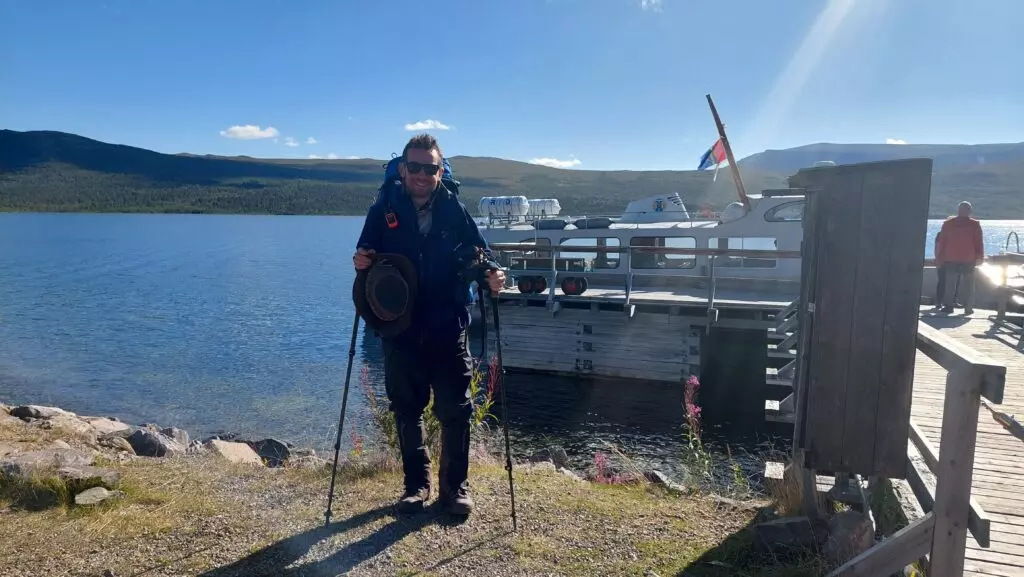
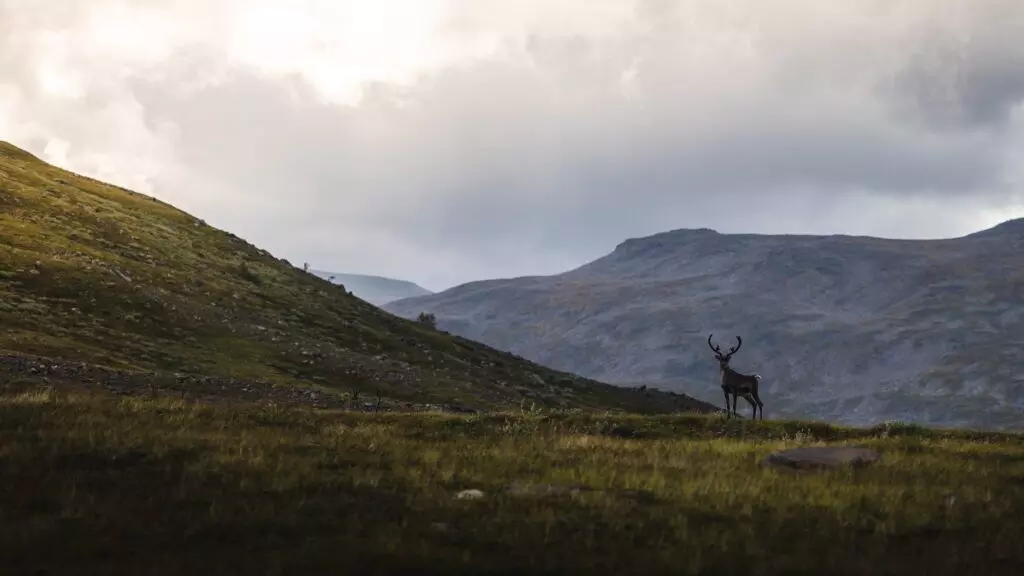
The Kungsleden winds its way south from Abisko, and can broadly be divided into five sections, with the start and end of each being a point with road access to the trail. Huts operated by the Swedish Tourist FederatioAnd mn (STF) dot the trail on some sections, with others being more remote and demanding full self-sufficiency for several days at a time. The first stage, being scenic and quite accessible, is the most crowded, and gave me the shock of truly knowing that was on the other side of the world to Sydney; essentially every other hiker was European and for a while I felt very out of place, but I learnt to embrace that feeling and used it to boost my confidence that if I had made it this far, I might be able to finish the entire trail over the 28 days I had allocated, which seemed like a massive task especially in those first few days.
The terrain was stark, mostly open, low tundra with long, glacial valleys and some stretches of birch and pine forest. And even in the summer hiking season (when the area is not completely frozen over) the cold was biting and often relentless. Even in 28 days, I never quite got used to the cold and frequent rain (temperatures were always between about 0 and 15 degrees at the maximum), especially when I would have to ice my feet in a lake or stream at the end of a day or battle my way up an exposed ridgeline with consistent wind and thunderstorm clouds looming.
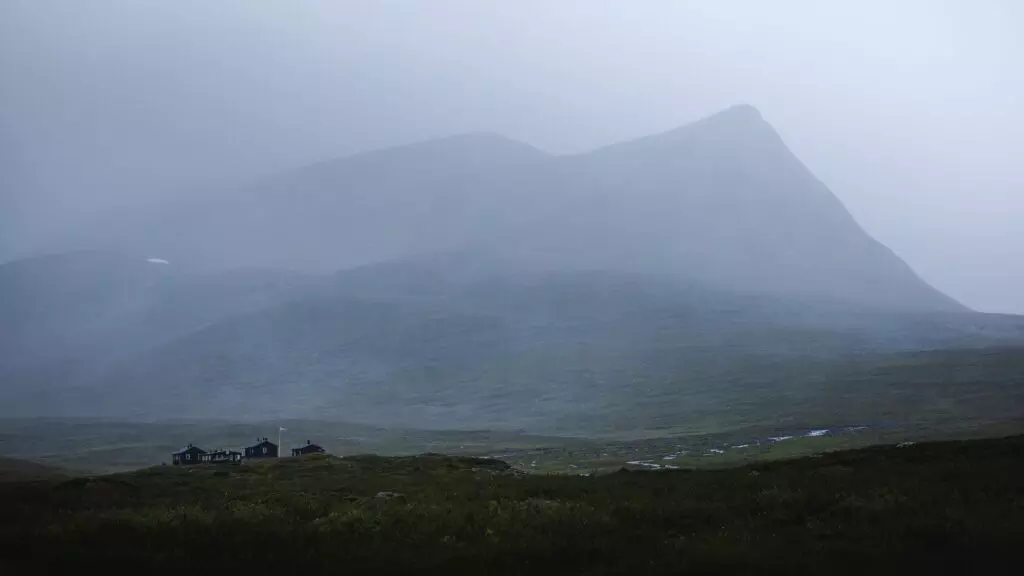
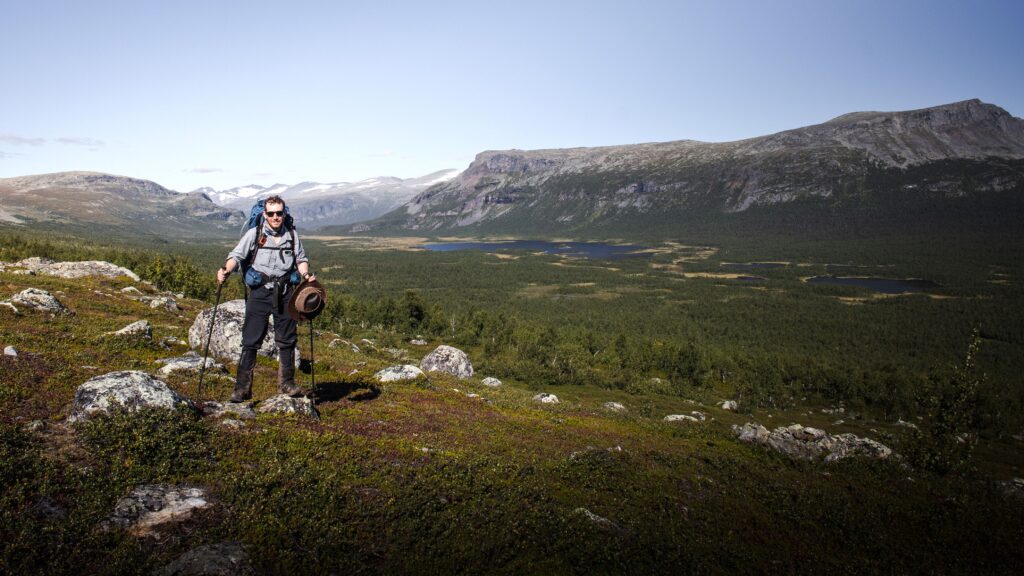
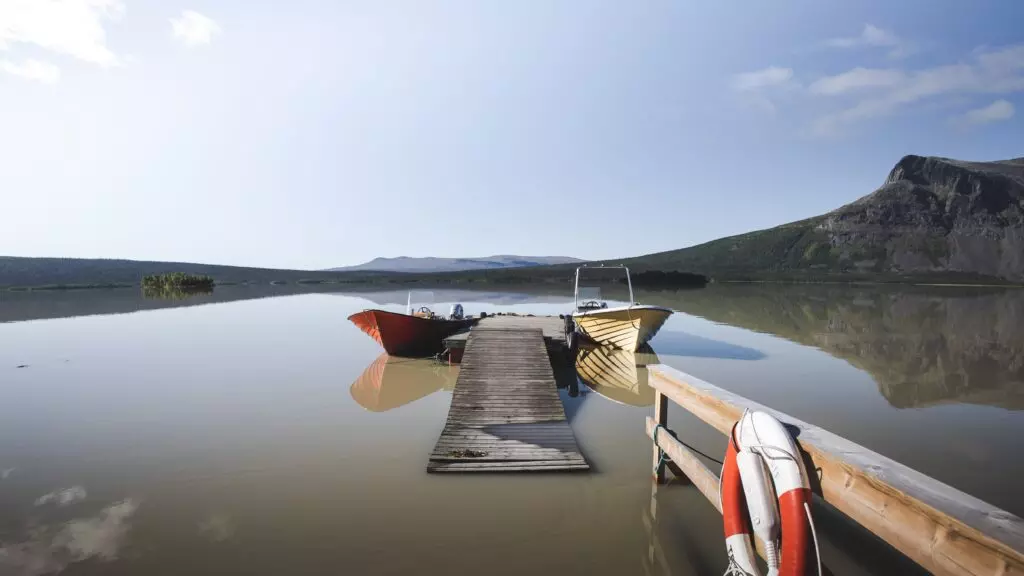
The hike really became a matter of breaking everything down into small stages – each day of hiking, each morning and afternoon, even every few kilometers (by rewarding myself with a snack or rest). I think this approach was necessary for mentally dealing with the scale of the hike involved and the physical effort required. While the whole trail was very scenic and varied, the weight of my pack (although light by my usual standards) and the reality of being totally alone for many hours and sometimes days at a time, meant that a lot of it wasn’t terribly enjoyable in a traditional sense; instead, it was an activity that was more about persistence and adventure for its ownAnd m sake, and about the achievement of reaching a personal goal through dedicated preparation and planning. Meeting other hikers from around the world and progressing through a section with them also made the experience that much more worthwhile, and I think I struck a good balance between experiencing the Kungsleden as a solo hiker and being able to share the craziness of it with some other people along the way.
As I progressed further south, my confidence improved but my body started to feel the strain. Food came from the towns at the start of a section, small pantry stores in some of the huts, and an endless supply of wild blueberries, cloudberries, and crowberries scattered in the forests and low tundra vegetation. The middle sections of the Kungsleden were particularly wild, with no real designated campsites and total freedom to walk as far as you could each day and pitch your tent in any number of truly remote settings. Several short boat trips were also required to cross deep lakes that cut perpendicular to the trail – most of these were provided by the STF or locals in small motor boats, but one was a mandatory self-rowing stretch (while I’m used to kayaking in Sydney, I quickly found that a traditional rowing boat, even in a mild current and breeze, is not a great skill area for me).
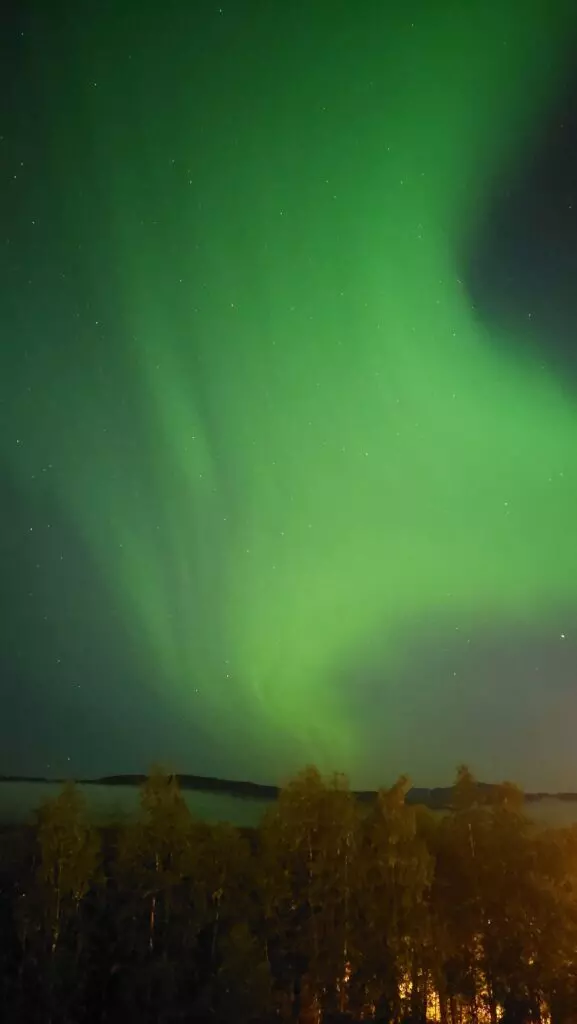
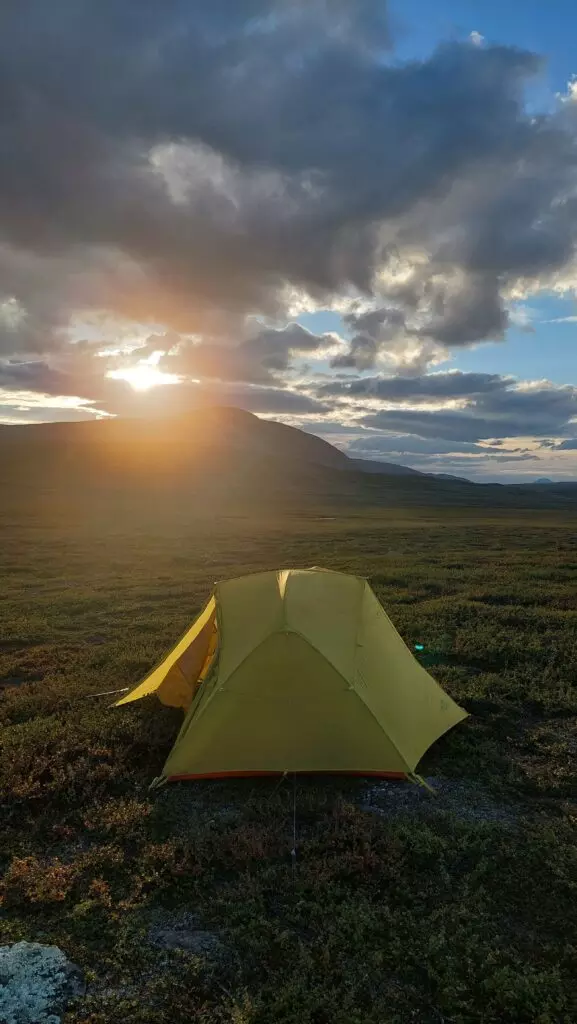
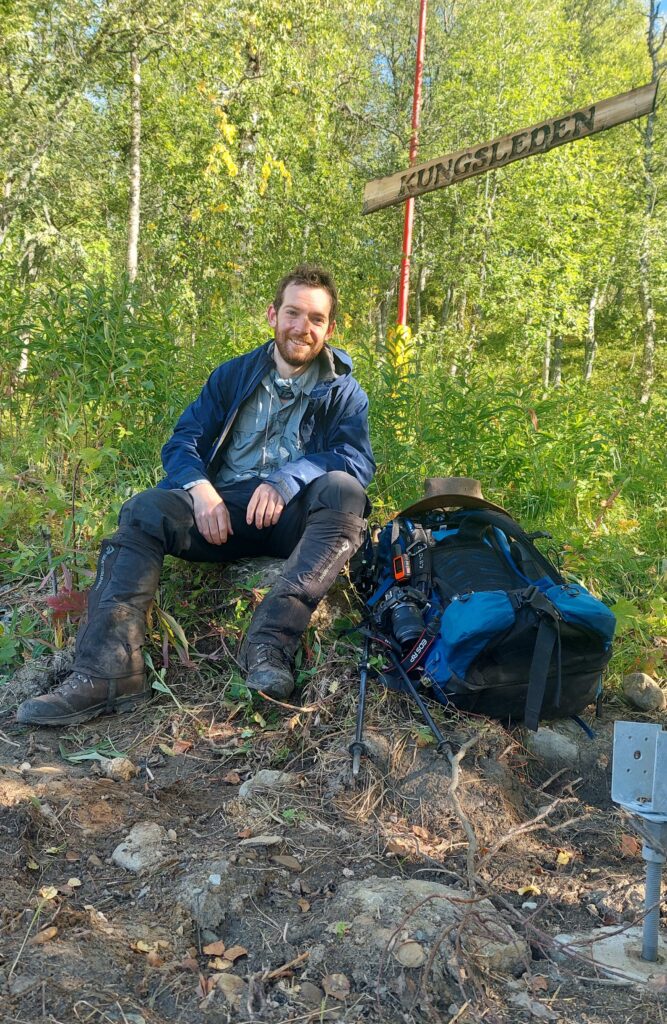
By the time I had around one week left to go on the Kungsleden, I finally felt as though my self-doubts about the trip were fading and I was somehow becoming very familiar with the land and the routine of each day. Passing herds of grazing reindeer was now a reliable part of my walking day (they are semi-domesticated, managed by the first-nations Sami people of this part of Scandinavia) and things that were pulling me towards the finish line (like my cravings for food that wasn’t in a dehydrated form) were getting stronger. I had dealt with many challenges, such as the leather of my boots splitting open and a very unfortunate spillage of boiling water over my camera, and I could sense that I was confident to deal with essentially any aspect of life outdoors in this harsh climate. On the night I finished the hike in the southern terminus town of Hemavan, exactly to plan after 28 days, I was rewarded by a display of the aurora borealis (northern lights), an eerie sight that provided a good full-stop memory to the adventure.
My sincere thanks again to Dick Smith AC, the Trustees of the Tony Balthasar Achievement Award, to my old Crew, Normanhurst Rovers, and to Scouting in general for being such a great environment to encourage people to set personal challenges and grow from their experiences.
Hugh Percival
(ex) Normanhurst Rover Crew
